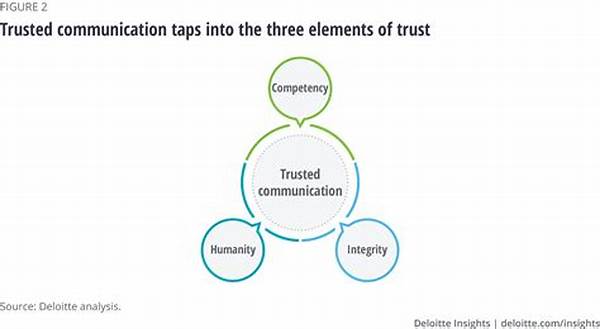In the fast-paced digital era, algorithms are driving innovation and decision-making, shaping how we interact with technology every day. As businesses and individuals increasingly rely on automated systems, building trust in these algorithms has become crucial. Establishing reliable trust development strategies is essential for fostering confidence in these complex systems. The beauty of algorithms lies not only in their fascinating complexity but also in their ability to revolutionize industries ranging from healthcare to finance. But without trust, even the most sophisticated algorithms fall short of delivering their true potential.
Imagine opening your favorite online shopping platform and being met with personalized recommendations tailored precisely to your tastes. These mesmerizing results are made possible by highly advanced algorithms harnessing massive amounts of data. However, what happens when these systems err? How do we ensure transparency and maintain faith in results amidst occasional slip-ups? It’s this intricate dance of trust and technology that makes for an exciting field of exploration—one that holds profound implications for the future. Let’s dive deeper into this journey of algorithms and trust development strategies.
As trust becomes a commodity in this age of machine learning, organizations are propelled into action, investing in robust strategies to nurture confidence in their systems. Whether it’s through regular audits, enhancing transparency, or user-friendly interfaces, the focus is on building bridges of trust without which no algorithm can truly succeed. Through fascinating stories and engaging anecdotes, we’ll unravel the intricacies of these strategies, offering insights and lessons learned from industry leaders who have paved the path in creating trustworthy algorithms.
—
Building Trust in Complex Algorithms
Creating trust in algorithms involves a multi-faceted approach that combines technological robustness with human-centric strategies. These trust development strategies are not just about having error-free algorithms, but also about creating a culture of transparency and accountability. For instance, when a financial application uses an algorithm to recommend investments, it should not only ensure high accuracy and performance but also provide explanations about how decisions are made. This transparency builds user confidence and fosters long-term trust.
Companies are increasingly resorting to user feedback as a crucial element of their trust development strategies. By involving end-users in the algorithmic process, companies encourage transparency and prompt corrective actions whenever necessary. Engaging storytelling and humor can play a key role in demystifying complex algorithmic processes for users. Blogs, testimonials, and engaging graphical content further enhance user understanding, thereby strengthening the trust-edge technology provides. Thus, trust becomes not just a byproduct but a strategic focus of deploying algorithms effectively.
—
What Makes Trustworthy Algorithms?
Trustworthy algorithms are those that combine accuracy, transparency, and fairness. Algorithms and trust development strategies mandate a balance between technological innovations and ethical considerations. The development of transparent algorithms is an act of bridging technological prowess with users’ ethical expectations. This binding force of trust is shaped by several pillars: regularity in audits, open channels for user interaction, and a commitment to ethical data usage. They promise transparency—a key driver in turning skeptical users into loyal advocates and ensuring that systems are not only efficient but inherently reliable.

